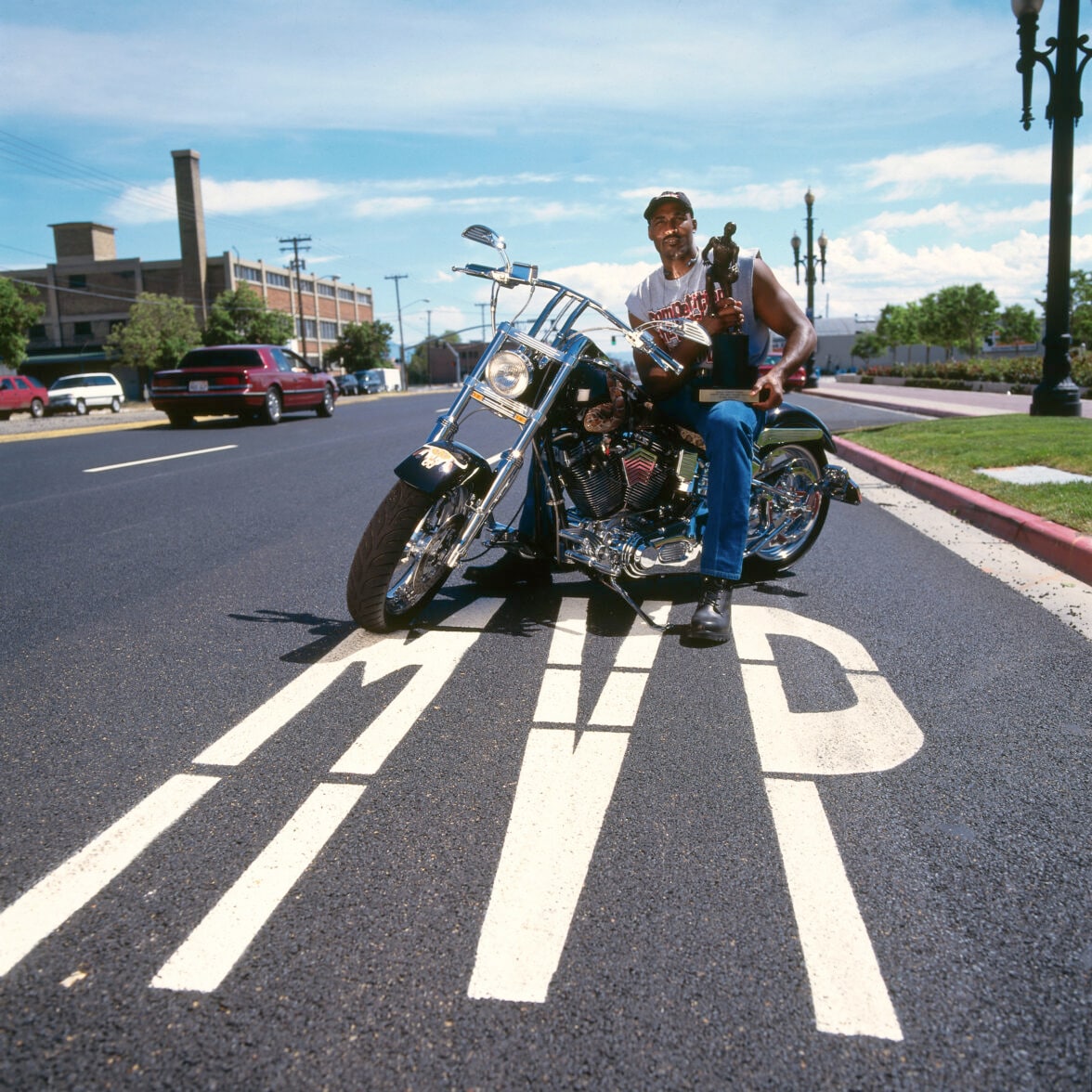
The prize of the 1985 draft was a big man so talented and hyped that Dave DeBusschere, General Manager of the New York Knicks, pounded the podium in delight when his team won the No. 1 overall pick. Patrick Ewing became a Hall of Famer and franchise player and the draft suspense was over, right? Who else could possibly emerge and match that impact? Especially at … No. 13? Well, that was a lucky number for the Utah Jazz, who found a diamond in the Louisiana rough. A self-proclaimed country boy who played at a school — Louisiana Tech — better known for its women’s basketball team. They drafted the Mailman, and did he ever deliver.
Karl Malone was 6-foot-9 and 255 pounds, not from birth, but it seemed that way. A big man with soft hands who ran the floor. Basically, he had the ingredients needed for the power forward position, the perfect prototype. That allowed him to drop hints right from the start while his overall game matured. During his rookie season he delivered a message to the mighty Los Angeles Lakers that maybe, just maybe, Showtime had some competition. Slowly yet surely, Malone made his presence known in a most powerful manner.
Chick Hearn interviewing a rookie named Karl Malone? A broadcasting legend and an awestruck young player? Both seemed to enjoy this one, and so will you, as you witness how eager Malone was to get his career started, how excited he was to be in the NBA and to help his mom. Listen as he explains why he was “top 10” in his high school class and how he plans to spend his time in the offseason.
What made Malone special was his ability to beat anyone his size in a footrace downcourt and take the punishment in the paint and seldom miss a game. He did so with a training regimen that would leave others reaching for the oxygen mask.

Malone worked on his speed and his endurance and his strength, the trifecta that separated the Mailman from the boys. We’re talking about sprint intervals on the track, biking through the Utah hills and doing enough weightlifting to create the anatomy that lasted 19 years in the NBA.
And if you think this is exhausting to watch, imagine putting in the work.
Malone was a scoring machine, and this was evident on Jan. 27, 1990 when he went bonkers on the Bucks, delivering 61 points, the highest total by a Jazz player since Pistol Pete Maravich set the previous mark back in New Orleans. It was vintage Malone — running the floor, dunking, hitting short jumpers … the recipe for an epic night.

When the Jazz played, the music was pretty consistent, and the highlights were mostly dominated by two players. Malone would get buckets and very often, those were made possible by John Stockton. The Jazz weren’t considered a highlight machine but no other team could match their consistency and a reel that looked virtually the same, night after night.
The best combination since peanut butter and jelly happened when John Stockton and Karl Malone became teammates. Decades later, they would be immortalized with statues outside the arena in Salt Lake City, with an intersection named after them, with a trophy they shared as All-Star co-MVPs in 1993, and by walking into the Hall of Fame. Stockton-to-Malone became a nightly happening that could not be avoided whenever the Jazz played. The connection was pure and perfect.
Most people saw Malone as a brute force who muscled his way to greatness, and saw Stockton as the cerebral point guard who relied mostly on his basketball IQ. This feature questions those norms, and in fact argues the other way. Watch and decide for yourself.

Malone was consistent throughout his career, meaning, consistently very good. Then in 1996-97, he went next level. He was the MVP, the first of two such awards for him, and transformed the Jazz into a championship contender. If the validation wasn’t obvious before then, it arrived — via special delivery — in the form of the most cherished individual award the NBA can offer. Imagine: A mailman getting a package meant just for him.

Malone could score when he had hair, and he could score when the hair was gone. That’s the mark of an all-time great, someone who endured and lasted and performed at a high level for two decades. Malone was a 14-time All-Star and 11-time member of the All-NBA First Team. In the 1999-2000 season Malone — at age 37 — became the oldest player to score 50 points in a game. He would finish with 36,928 points for his career, second only to Kareem Abdul-Jabbar. Witness the old man reaching the half-century mark in style, without the use of a cane.










